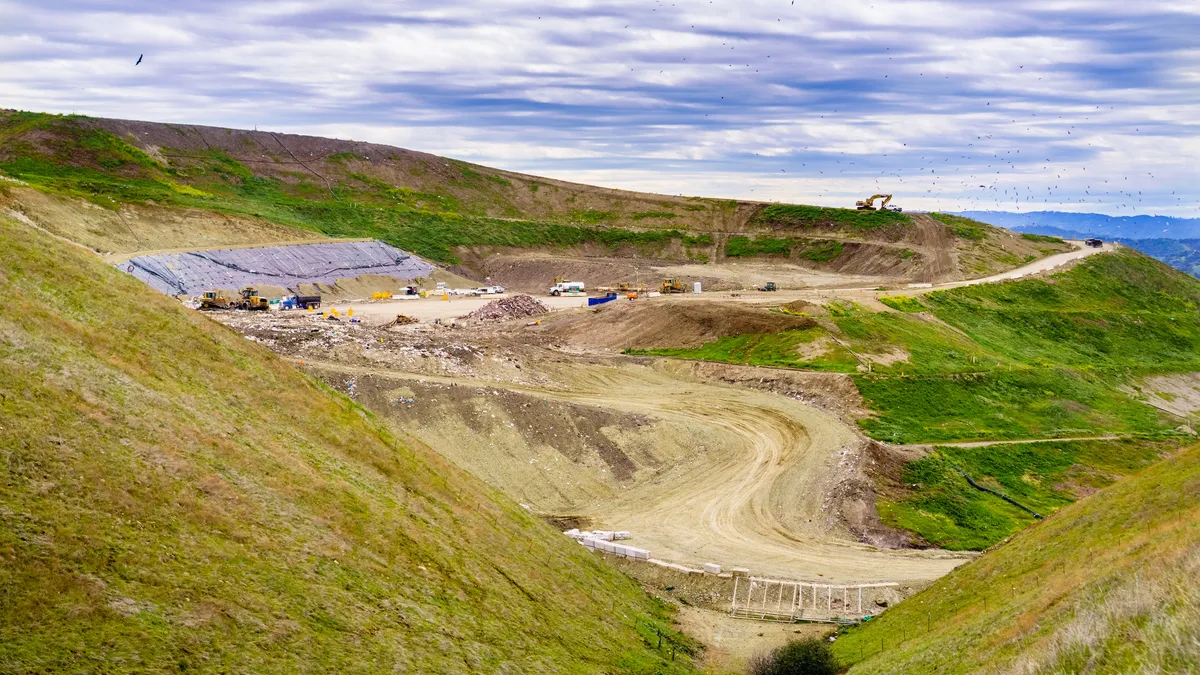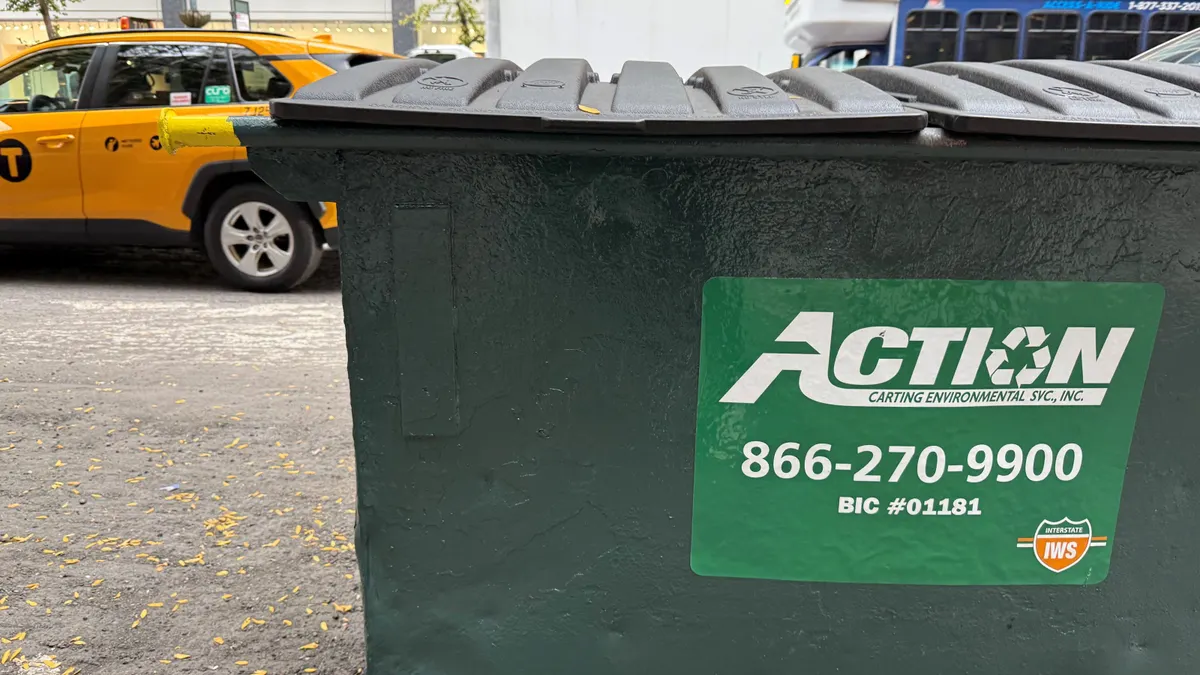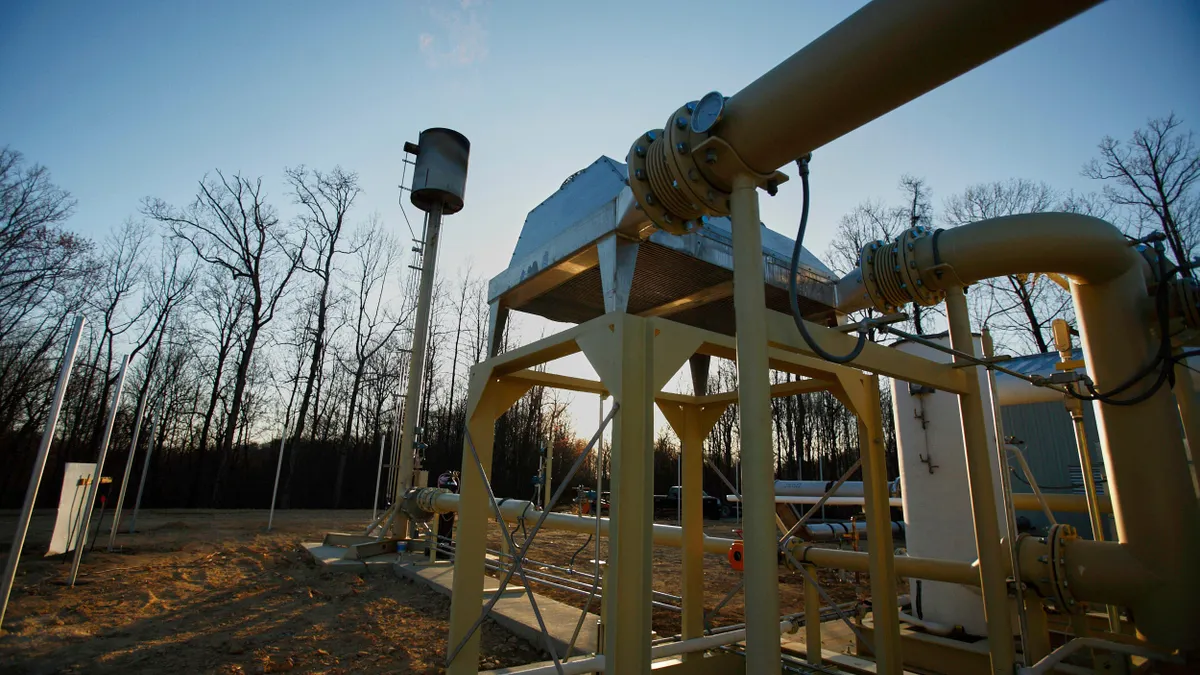As landfill operators plan for a future with stricter regulations, more environmental justice considerations and uncertainties about PFAS and other contaminants, speakers at the Global Waste Management Symposium (GWMS) offered new guidance for adjusting to changing times.
The conference, held Feb. 14-17 in Indian Wells, California, kicked off with a keynote address from Waste Connections' James Little, who called for optimism in the face of climate and regulatory uncertainties, and continued with numerous sessions addressing the impact of PFAS, or per- and polyfluoroalkyl substances, in managing leachate. Here are some of the other key takeaways from the biennial event:
Environmental justice tools can help plan outreach and permitting processes
New and forthcoming environmental justice laws will require operators to gain a better understanding of the neighborhoods where they do business, and online screening tools offer important data that can help operators gain insight into these communities and the burdens they may face, said Michael Jensen, senior counsel and director of regulatory affairs for WM.
He highlighted several state and federal resources, including the new Climate and Economic Justice Screening Tool. The White House announced last week that the long-awaited tool is now in beta. It uses publicly available data on metrics like climate and pollution burdens, as well as access to affordable housing, clean water, and jobs to identify “disadvantaged communities that are marginalized, underserved, and overburdened by pollution.” The tool is part of the Biden administration’s Justice40 Initiative, which aims to provide 40% of benefits from certain federal investments to disadvantaged communities.
WM uses the U.S. EPA’s existing EJScreen tool to plot neighborhood demographics around all of its facilities, including information such as household income and population by race. According to Jensen, WM is the “only company in our industry” to regularly publish information about its sites using the tool.
“We have a mission to focus on environmental justice because it's not just a box to be checked. We want to be a good neighbor,” Jensen said.
States such as Maryland and California have their own screening tools that provide an “EJ score” for state census tracts, based on factors such as air pollution. These tools also help identify “overlapping burdens” that can give insight into numerous coexisting environmental justice factors within a given neighborhood.
Waste facilities will need to become more aware of their own potential impacts and relationships within the communities where they operate. At the same time, they must be aware of overlapping impacts a given community might face from other operators' facilities in the same neighborhood, he said.
New Jersey passed a law in 2020 that requires certain operators to consider the environmental justice impacts on nearby communities when applying to expand a facility, construct a new one or renew permit authorization. Proponents say the law is notable because of its mandatory compliance components and because it calls for facilities to take into account the cumulative human impact, not just parameters of individual permits.
Yet Michael Trupin, manager of consulting services at Trinity Consultants, said these strict new standards in New Jersey have put the waste industry “in the crosshairs” by delaying certain permit approvals and projects by as much as a year. The change will also prompt higher permit fees and necessitate more time and effort to host required public hearings and provide paperwork, he said. The law now also requires operators to complete a detailed environmental justice impact statement that determines any new environmental or public health impacts on overburdened communities.
“We're literally talking about the community being involved in determining whether or not you get a permit, whether or not your facility can continue to operate,” he said.
More detailed data can help landfills better manage greenhouse gas emissions
As landfill operators consider how to limit impacts on neighborhoods, they can also keep a more careful eye on climate change impacts through a thorough data analysis of daily operations, said Mark Adams, engineering manager for Waste Connections' central region.
Adams advocated for creating site-specific climate impact scorecards for individual landfills as a way to assess each facility’s contributions to the company’s carbon footprint and identify specific areas for reducing those impacts.
Waste Connections calculates its landfill scorecards using factors such as emissions from construction activity, off-site leachate disposal, on-site vehicle fuel usage, waste emissions and soil oxidation data, added Mary-Leigh Ariens, a staff environmental scientist at Weaver Consultants Group. The scorecard also accounts for emission reductions and offsets from elements such as landfill gas collection, onsite recycling, carbon sequestration efforts, and “emissions avoided” through renewable energy projects.
While Waste Connections aims to make its process more accurate through further research and data collection, these scorecards help keep landfills accountable to surrounding communities and demonstrate that “landfills can and should be part of the community’s plan for sustainability,” Adams said.
Researchers from North Carolina State University studied ways to determine the long-term environmental impacts of a typical U.S. MSW landfill through a modeling study, which showed that factors like regional weather, the amount of time a landfill collects gas and the materials used to build the landfill itself are all important variables that contribute to greenhouse gas emissions.
Landfills account for the vast majority of companies' overall greenhouse gas emissions. They also receive more than half of the MSW generated in the U.S and are the third-largest source of human-related methane, a potent contributor to climate change, said research assistant professor Jim Levis, presenting data from the study’s main researcher, PhD student Yixuan Wang.
“A lifecycle assessment for a landfill is tricky, because landfills last for a long time, and different materials degrade at different rates and produce different amounts of emissions,” he said.
While acknowledging such variability among U.S. landfills, data from the model does offer a few options for reducing overall greenhouse gas emissions, said Levis. One takeaway is that localities in warmer regions could improve organics diversion policies to avoid rapidly decaying material like food and yard waste from ending up in landfills, generating excess gas. Another takeaway is older Subtitle D landfills that make plans to turn off gas collection systems should instead consider collecting gas longer, “which can have a substantial reduction in greenhouse gas emissions and overall reduce environmental harms."
Emerging contaminants will make leachate treatment even trickier
Speakers also looked ahead at environmental challenges landfills may face in the near future, particularly in the leachate management space. Stephen Batiste, a professional engineer at Brown and Caldwell, said leachate management has become a more complex and expensive endeavor as landfills tackle emerging contaminants — such as PFAS, microplastics, pharmaceuticals and pesticides — and that trend is bound to continue.
Landfill operators have usually managed leachate by discharging it to publicly owned treatment works (POTWs), but these entities are implementing tighter rules and stricter discharge limits “either on volume or what’s in the leachate you’re sending,” he said. Batiste recommends landfill operators build and maintain strong relationships to prevent miscommunications or permitting issues down the line.
In a keynote speech opening GWMS, James Little, executive vice president of engineering and disposal for Waste Connections, said his company and others are reacting by developing on-site treatment and disposal options for leachate.
Anticipated federal and state regulations on PFAS could influence this relationship further, but Batiste notes “POTWs are taking a proactive approach as opposed to waiting on regulations.” Some facilities now require landfills to provide minimization plans for PFAS and other contaminants, especially in areas where treatment plants are focusing more on water reuse projects. That could mean more landfills will need to arrange for pretreatment.
Few regulations currently govern microplastics limits in drinking water, leachate or wastewater, but Renzun Zhao, an assistant professor at North Carolina A&T State University, said that could change in the near future with bills like the Break Free From Plastic Pollution Act, which has not moved much since it was reintroduced but has inspired grassroots support. Zhao presented research on where and how microplastics and nanoplastics show up in leachate, but he stressed that more data and research is needed in coming years.
“This is an emerging contaminant in landfill leachate. A few years ago, there was no PFAS talk [at GWMS], but this year there were three sessions. Micro- and nanoplastics are the new frontier that PFAS was a few years ago, and they could become a long-lasting issue.”


















